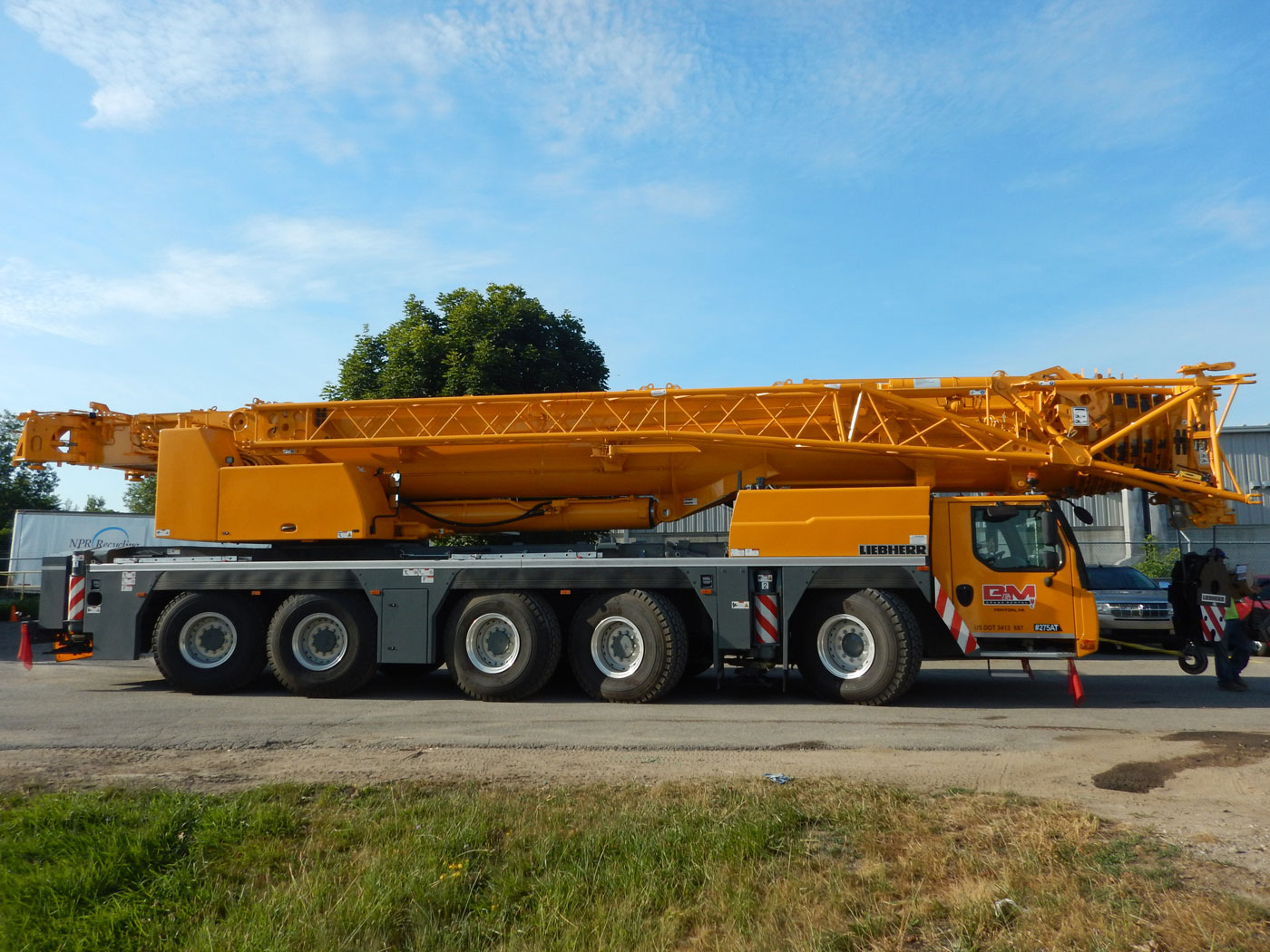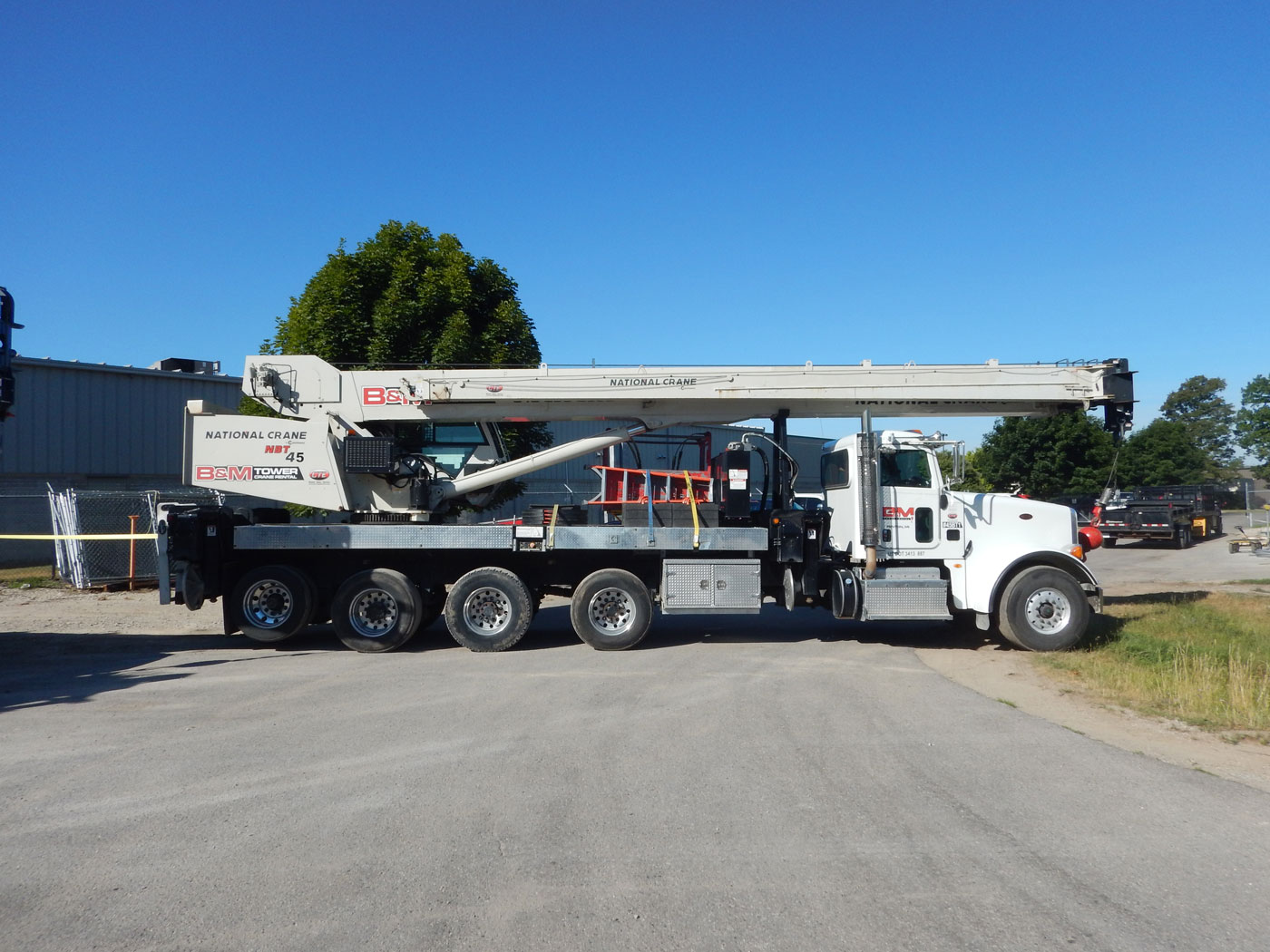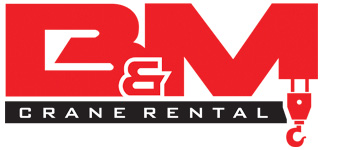Tower cranes are one of the most common types of crane used on construction worksites today. They are highly effective at lifting and moving heavy loads, yet they do not take up very much space on site like some other types of cranes. It is extremely likely that you have seen a tower crane at some point in your life. These cranes insert themselves in city skylines, punctuate growing downtowns, and make themselves hard to miss with their lengthy presence. Tower cranes received their moniker due to their tall, tower-looking structure. Attached to this tower is the jib and counter-jib which work to grab objects and keep them balanced, respectively.
A typical tower crane can reach hundreds of feet vertically into the sky, and have a similar horizontal range of motion. Some of these cranes are self-erecting, while others may require a bit of extra help during set-up and take-down. Within this category of cranes, there are actually numerous types of even more specialized tower cranes. In this post we will go over six types of tower cranes, including what actions they are capable of carrying out and what situations they are best suited for.

Luffing Jib Tower Cranes
A luffing jib tower crane, more commonly known as a luffer or luffing crane, can be recognized by its diagonal arm which comes out from the top of the tower at an angle. This diagonal arm can move in and out of the tower, making it able to protrude anywhere between vertically out from the mast or from a 30 degree angle. The luffer is extremely slender which makes it an optimal crane to use in tight spaces like urban areas that may already be dotted with high rise buildings. To achieve this compact form, the luffing crane keeps its hook point off the end of the jib, and its counterweights are located close to the tower. A major benefit with luffing cranes is that the operator’s cab is situated in a way that allows for mostly unobstructed views of the worksite. This is often a luxury not afforded with cranes, and requires a lot of clear and concise communication amongst construction teams in order to avoid accidents and injury.
Derrick Cranes
A derrick crane is a smaller crane that is designed to perch atop roofs or fit into small spaces. This crane is composed of a guyed mast and a boom that is hinged at the base of the crane. Because of their small footprints, derricks are commonly found on ships or at docking facilities. The derrick crane must be assembled on site, and is actually used to help assemble and disassemble other tower cranes fairly often! Unlike most other crane types, the derrick does not include a cab for an operator. Instead, these cranes are controlled remotely with a wired or wireless connection.
Self-supporting Tower Cranes
This type of tower crane is anchored at its base by a weight or with a reinforced concrete block. The tower mast shoots up from this anchor point and rotates around to pick up loads. It is important to plan in advance where this crane will be set up and what it will need to reach as it is very hard to move after anchoring it down. The self-supporting tower crane is usually used for shorter structures that do not require a tower extension.
Travelling Tower Crane
This type of crane gets its name due to its ability to move around a jobsite. The travelling tower crane is either mounted on tracks or a rail so that it can travel around its environment with ease. If you have a very expansive project, it may be a good idea to hire a travelling tower crane so that you do not have to bother with unnecessary crane assembly and takedown. Some travelling tower cranes are designed to carry loads while moving from point A to point B, but others are not. It is imperative that you only use a crane for a purpose it was designed to carry out. This means you should never load a travelling tower crane to move an object if it was purely designed for stationary lifting. Another point to keep in mind is that the travelling tower crane can only move on flat, solid ground. If you are working in an area with rough and uneven terrain, look to hiring an all-terrain crane instead.

Self-Climbing Tower Crane
Self-climbing tower cranes are an extremely interesting and helpful piece of equipment. These cranes start as a normal self-supporting tower crane that is anchored at a concrete base. As a building is erected, the tower of the crane is attached to the building in some way. When the building begins to outgrow the crane tower, a new piece of tower will slide upwards through the center of the tower and add itself to the top of the crane. In this way, the crane will continue to grow vertically with whatever building it is helping to construct. These cranes can be used to build skyscrapers or even wind turbines!
Hammerhead Tower Cranes
A hammerhead crane is composed of a horizontal jib connected to a vertical tower. These cranes have been around for decades and are still used today because they are excellent at lifting heavy loads with precision and accuracy. These cranes are extremely versatile in their uses, as they can be used to lift virtually any volume of materials and work on most job sites. The hammerhead tower crane is operated via a cab that sits at the intersection of the tower and the jib. A trained crane operator will sit in the cab and control what the crane picks up, moves, and puts down.
A Crane For Every Job
As you can see, there are plenty of options to choose from when looking for a tower crane rental. There are a number of things to keep in mind that could influence your decision on which crane to hire. One factor that should be considered when perusing tower cranes is what kinds of materials you will need to lift. Will your crane be lifting concrete, steel, or possibly parts of other heavy machinery? Other important points include the work environment: will your crane need to move around the worksite or can you use a fixed crane, is the job site spacious or do you require a more compact frame that can squeeze between buildings or other objects?
If you are having a hard time coming to a decision on which type of crane will work for your job, feel free to contact B&M Tower for some advice. We are available by phone or email to answer any questions, or get you set up with one of our very own crane rentals. At B&M Tower, we provide labor, logistics, and management all in-house. This guarantees that every step of the crane rental process is completed in accordance with our high standards, which in turn leaves our customers with quality end products. If you’ve been looking for a reliable and experienced crane rental service, look no further. Contact B&M today to get started.

